For years, the artist Sterling Wells has made the urban waterways of Los Angeles an extension of his studio, drawn to the interplay of nature and man-made sea life and the detritus that inevitably accumulates in these often overlooked corners of the city.
“I never wanted to paint seamless nature,” Wells told Artnet News. “I always want there to be a contrast between the soft, flowing marks of nature and the hard edges and geometric shapes of architecture and graphic design.”
Last month, in pursuit of that vision, Wells was on Ballona Creek at Playa Vista on the city’s West Side. He was working hard to complete the construction of a somewhat dilapidated floating studio where he planned to create works for his current solo exhibition, “A New Flood”, at the Night Gallery in Los Angeles. Then he heard the helicopter overhead.
Local press briefing FOX 11 had learned of the unusual ship floating in the waterway through Redditand a reporter was coming to investigate concerns that the art project was a homeless encampment.
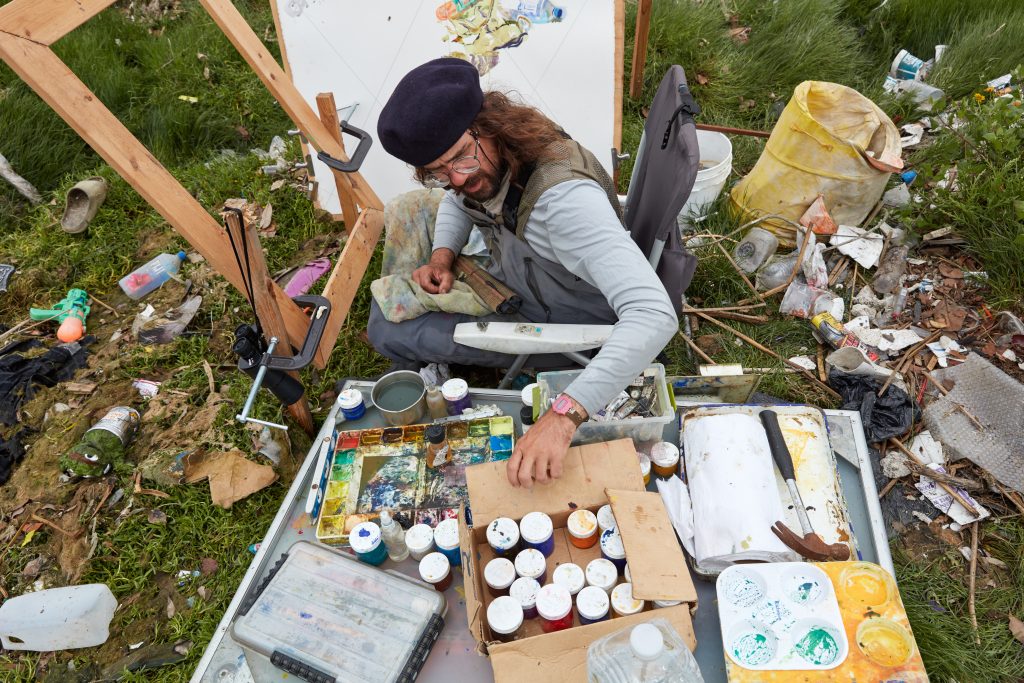
Sterling Wells working in Ballona Creek, Los Angeles. Photo by Nik Massey, courtesy of Night Gallery, Los Angeles.
“I got a book from the library on how to build homemade houseboats. The base has these beams in a grid that are supported by rain barrels that sort of act like pontoons. I bought them from this Mediterranean import company in Gardena and they’re actually pepperoncini barrels,” Wells said.
The goal was to use the raft to store his art supplies, but also to anchor in a fixed position so Wells could capture a single view over several days as the weather and water conditions changed.
The craft also had bird blinds, to help the artist observe local waterfowl without disturbing them. And yes, he probably would have slept there sometimes, to avoid the 40-90 minute drive back to Highland Park, 15 miles away.
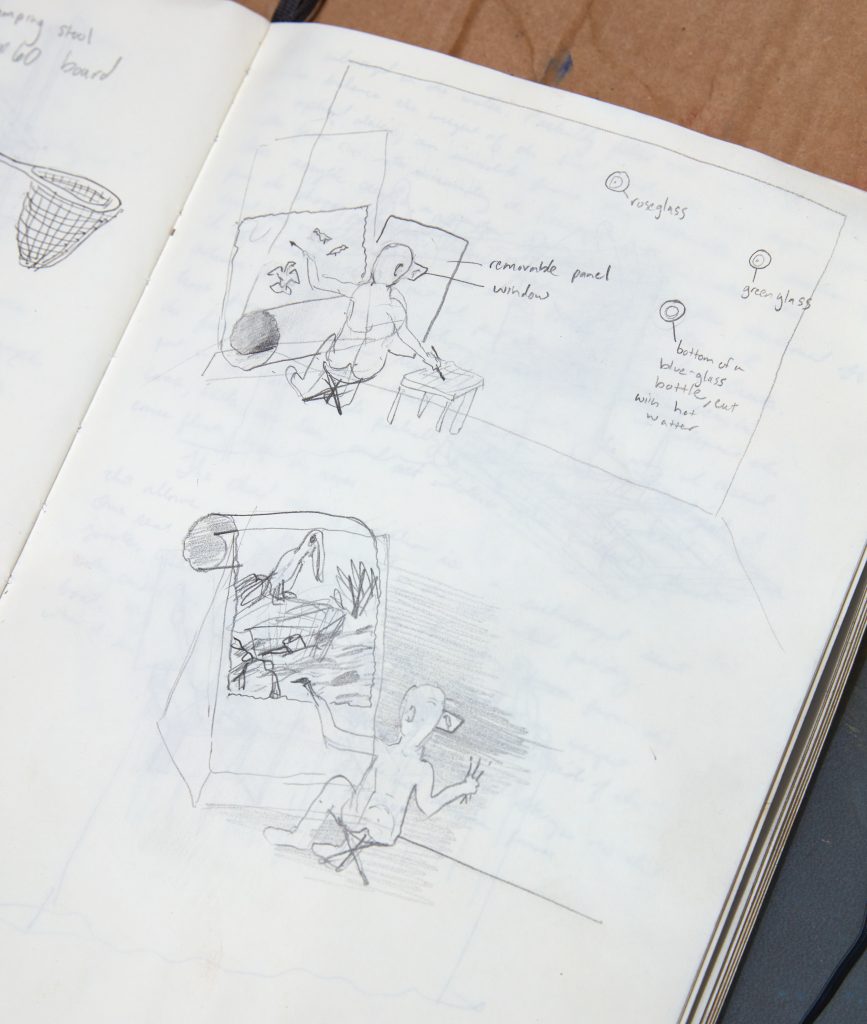
Sterling Wells’ sketches of the raft and its bird blinds. Photo by Nik Massey, courtesy of Night Gallery, Los Angeles.
They say no publicity is bad publicity, but the report caught the attention of government officials. The next morning, LA County Public Works officials arrived, damaged the raft by pulling it out of the water, and forced Wells to apply for a permit for his aquatic studio. (The title of the exhibit is taken from the subject line of the city’s email response to Wells’ request, which reads, “A new flood access permit has been CREATED.”)
Unfortunately, however, the city put the kibosh on the project. Wells never had a concrete reason, but he suspects an angry local – who claimed to own the property and disapproved of the raft – played a role.
“In one of my last conversations with LA County Public Works, I was told that according to county code, people aren’t allowed to be in the flood control channel. I said, ‘You know, I’ve been painting the site for a long time with no problem. Why can’t I just keep doing what I’ve been doing?'” Wells recalled. “And she said, ‘Well, we weren’t paying attention to you, but now that we are, you’re not not allowed to be there.””
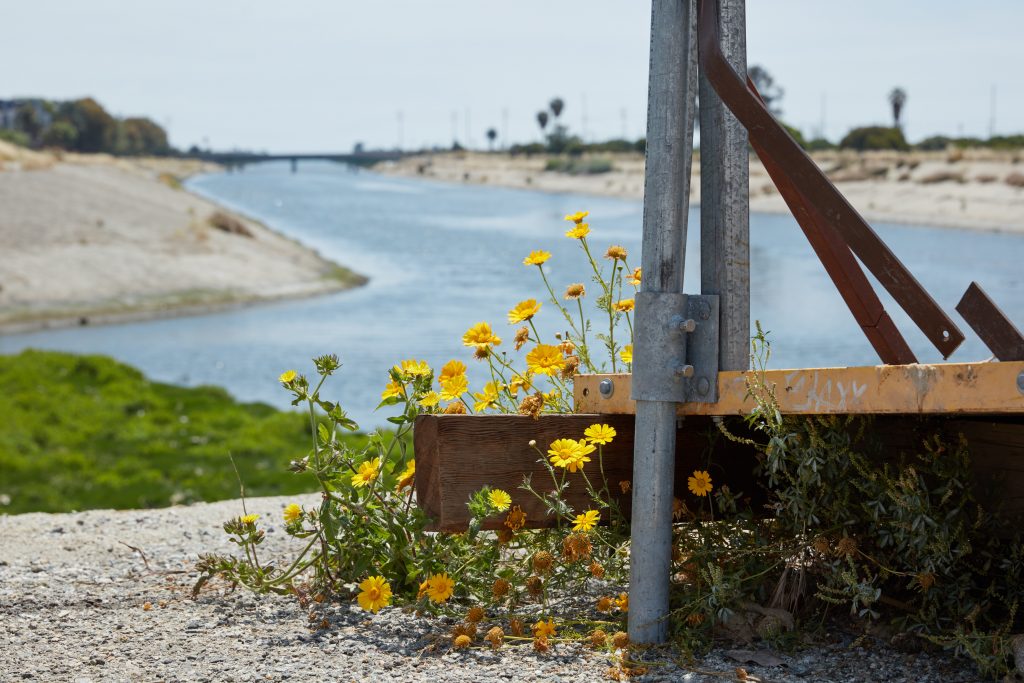
The Sterling Wells shipyard in Ballona Creek, Los Angeles. Photo by Nik Massey, courtesy of Night Gallery, Los Angeles.
Nevertheless, the artist continued to create on site without a barge, transporting it to the gallery, where it is now the centerpiece of his solo exhibition. (The hope is to eventually get a permit approved and put back on the water.)
“The drama with the raft genre was a big distraction from my actual paintings,” Wells said.
To complete the body of work in time for the opening, Wells secured a nearby motel room for five nights, wading through Ballona Creek to paint each day.
Sterling Wells’ raft on display in ‘Sterling Wells: A New Flood’ at the Night Gallery in Los Angeles. Photo courtesy of Night Gallery, Los Angeles.
“I chose this site because it is neglected and not maintained. It is not a nature reserve that is cleaned up. There is a bird’s nest right next to the rubbish and rubbish, and there are dead birds and the seagull that has a fishing lure stuck in its leg,” he said. “I like to paint garbage, water bottles and the accumulation of floating things. Old bikes and shopping carts and all those things that’s at the bottom of the creek that’s covered in barnacles and mussels.
The resulting works are Well’s largest paintings to date, painted not only outside, but standing in the contaminated watercourse. Each captures the view of the surrounding salt marsh, but also of the shallows.
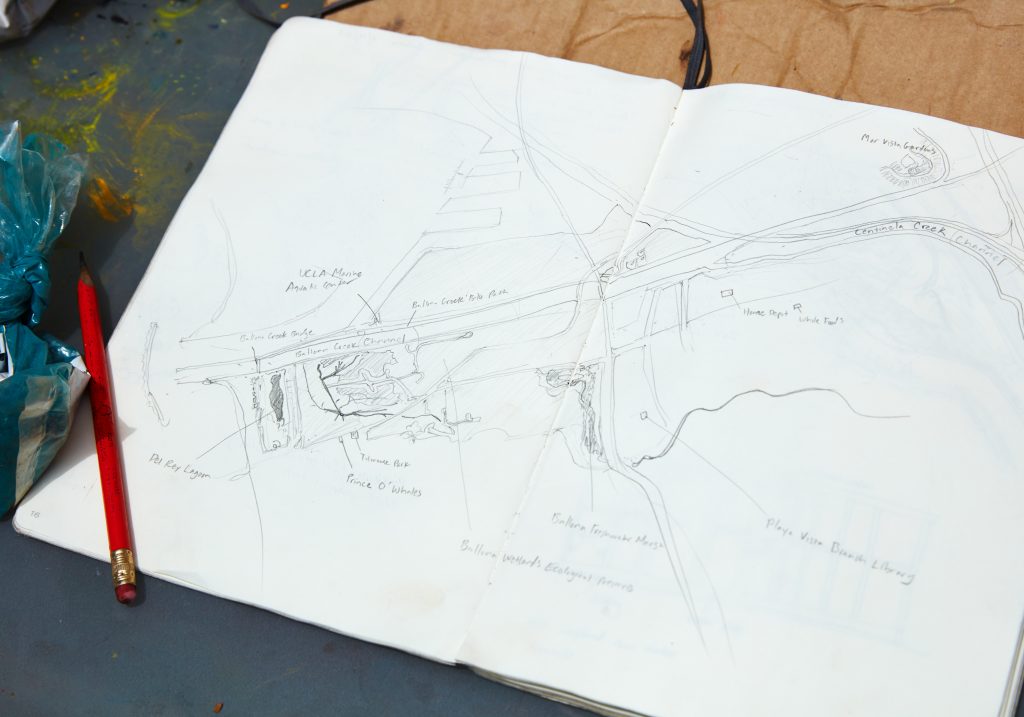
Sterling Wells’ sketches of his shipyard in Ballona Creek, Los Angeles. Photo by Nik Massey, courtesy of Night Gallery, Los Angeles.
“They talk about the transition from looking at water where it is transparent, to looking through water as it becomes an opaque surface. I’m looking through the water, light hitting things at the bottom of the stream, light hitting the surface of the water, and things floating inside the water column,” Wells said.
This includes both litter and aquatic life moving in and out of the stream with the ebb and flow of rising and falling water.
“I really immersed myself in the tide and the marine ecosystem. It’s two miles from the ocean, and there’s kelp, seaweed, crabs, mussels and birds,” the artist added.
With the raft out of service, Wells instead worked with the small floating trestles he had previously constructed using plastic bottles and milk jugs.
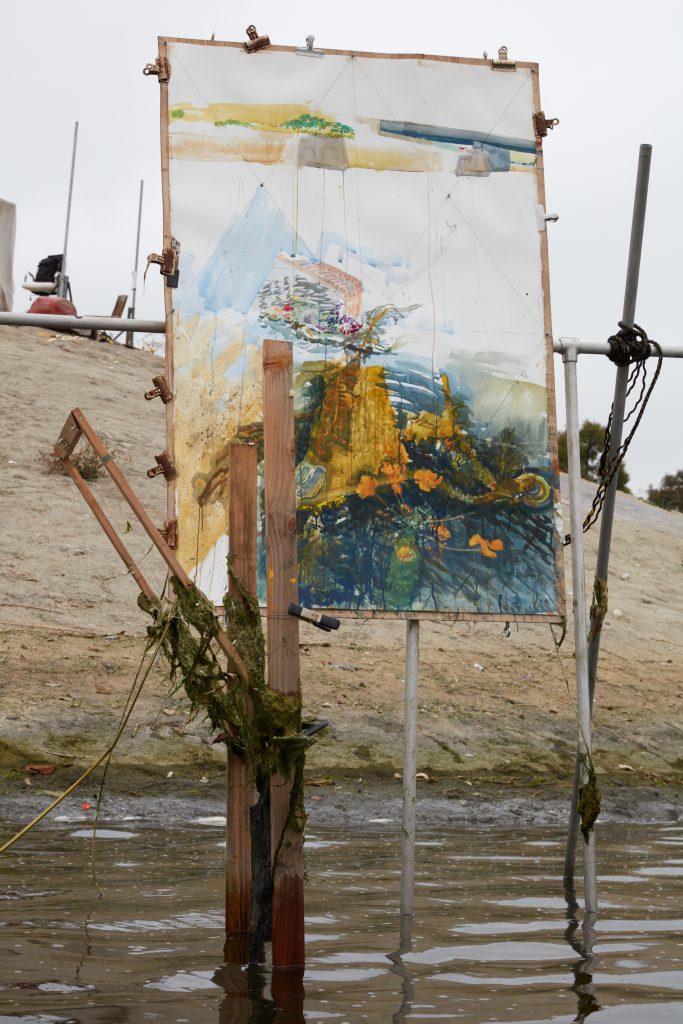
A Sterling Wells painting being created on a floating easel in Ballona Creek, Los Angeles. Photo by Nik Massey, courtesy of Night Gallery, Los Angeles.
“To paint from observation, the head must remain in the same position. And so the floating easel allowed me to work big, moving the paper around my body and up and down in the water,” Wells explained. “But getting these pieces of paper to stay upright in the middle of the water in the wind is incredibly difficult. I mean, everything is constantly blowing and blowing away.
Through this process, the stream not only becomes the subject of the work, but a physical part of the painting. The artist even mixes her watercolor pigment powders with the waters of the stream, allowing the process to manifest on the page as mud and seaweed splatters on the surface.
“He represents water,” Wells said, “but he East water.”
See more photos from the exhibition and the artist at work below.
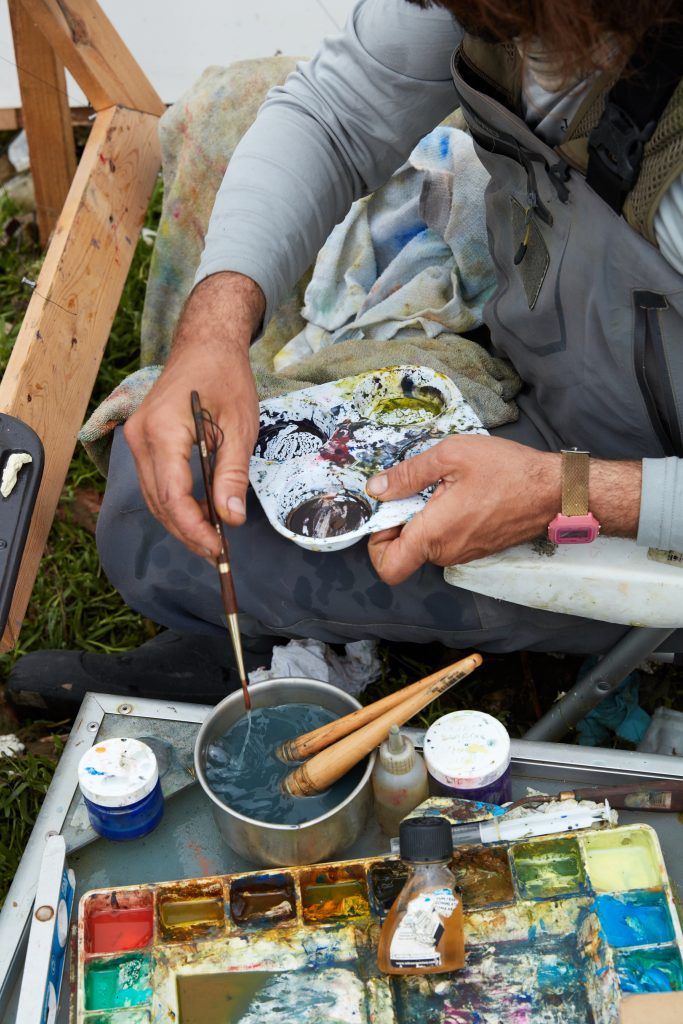
Sterling Wells working in Ballona Creek, Los Angeles. Photo by Nik Massey, courtesy of Night Gallery, Los Angeles.
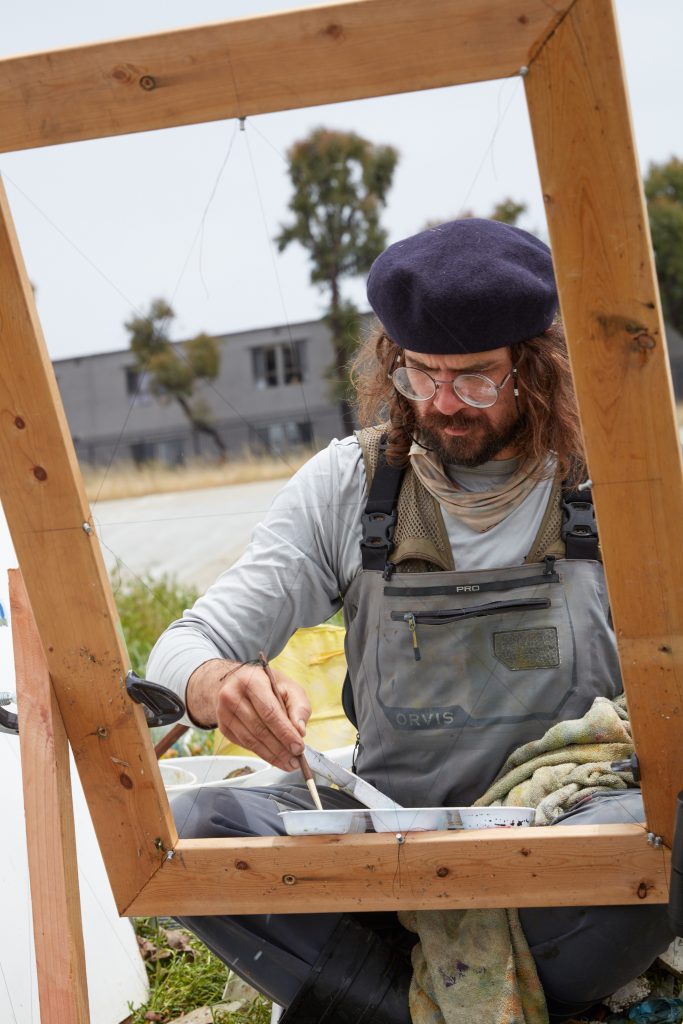
Sterling Wells working in Ballona Creek, Los Angeles. Photo by Nik Massey, courtesy of Night Gallery, Los Angeles.
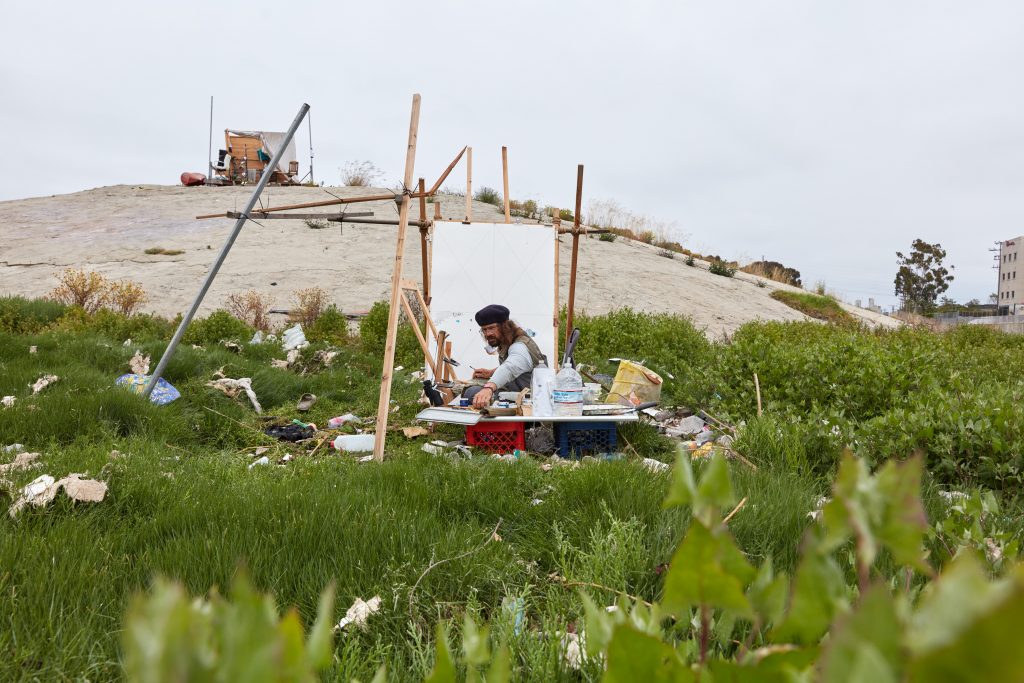
Sterling Wells working in Ballona Creek, Los Angeles. Photo by Nik Massey, courtesy of Night Gallery, Los Angeles.
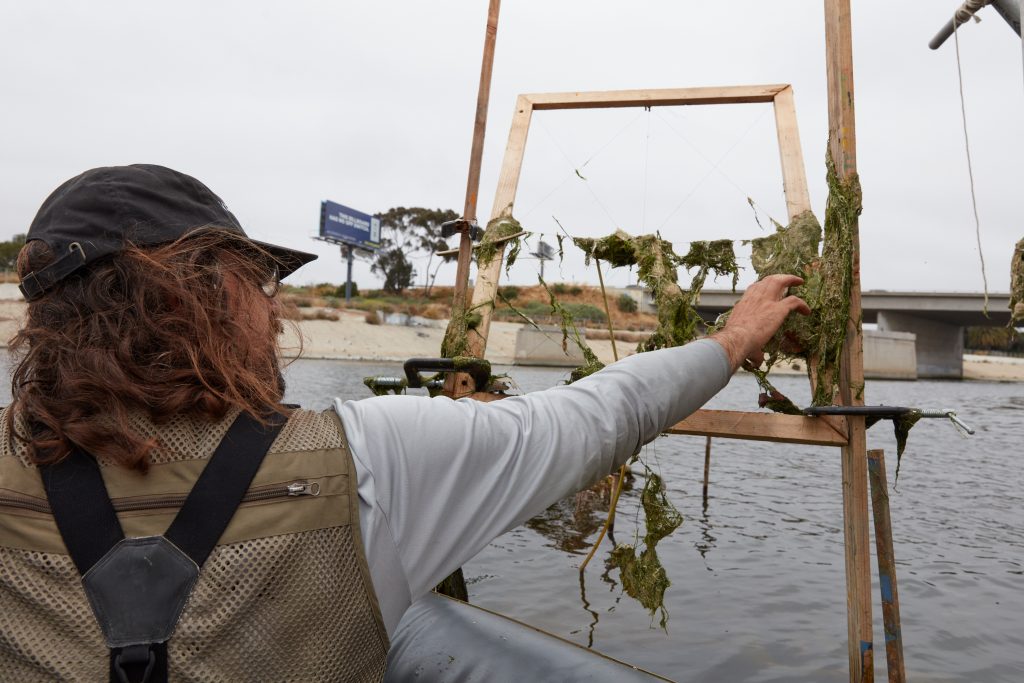
Sterling Wells working in Ballona Creek, Los Angeles. Photo by Nik Massey, courtesy of Night Gallery, Los Angeles.
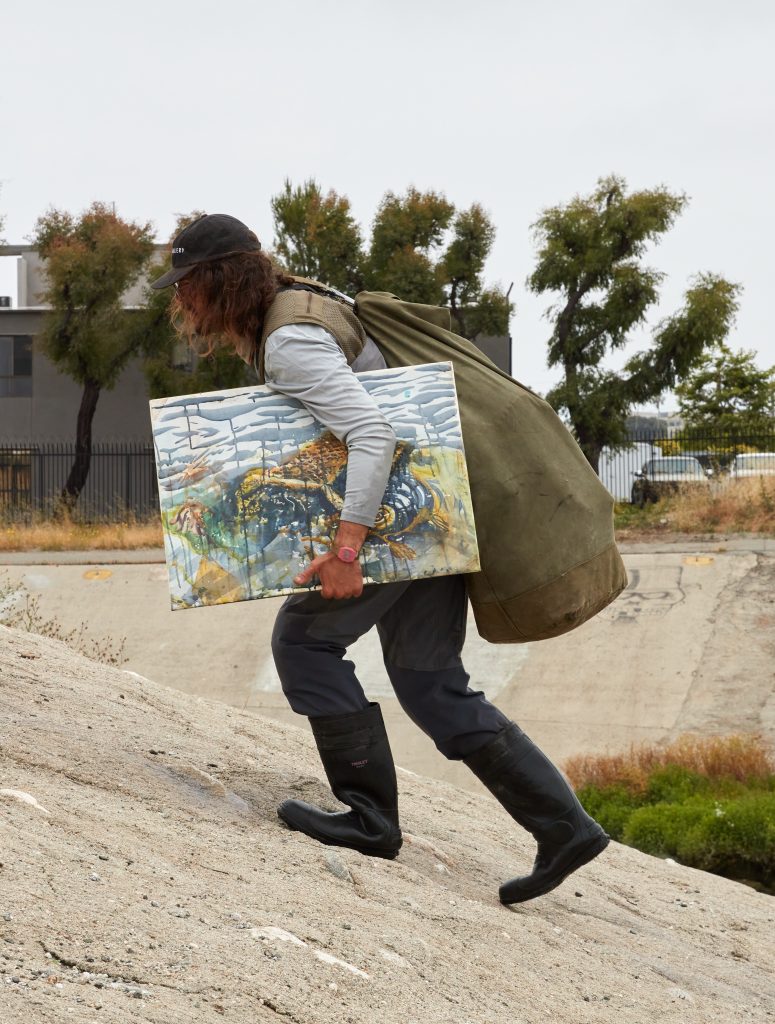
Sterling Wells working in Ballona Creek, Los Angeles. Photo by Nik Massey, courtesy of Night Gallery, Los Angeles.
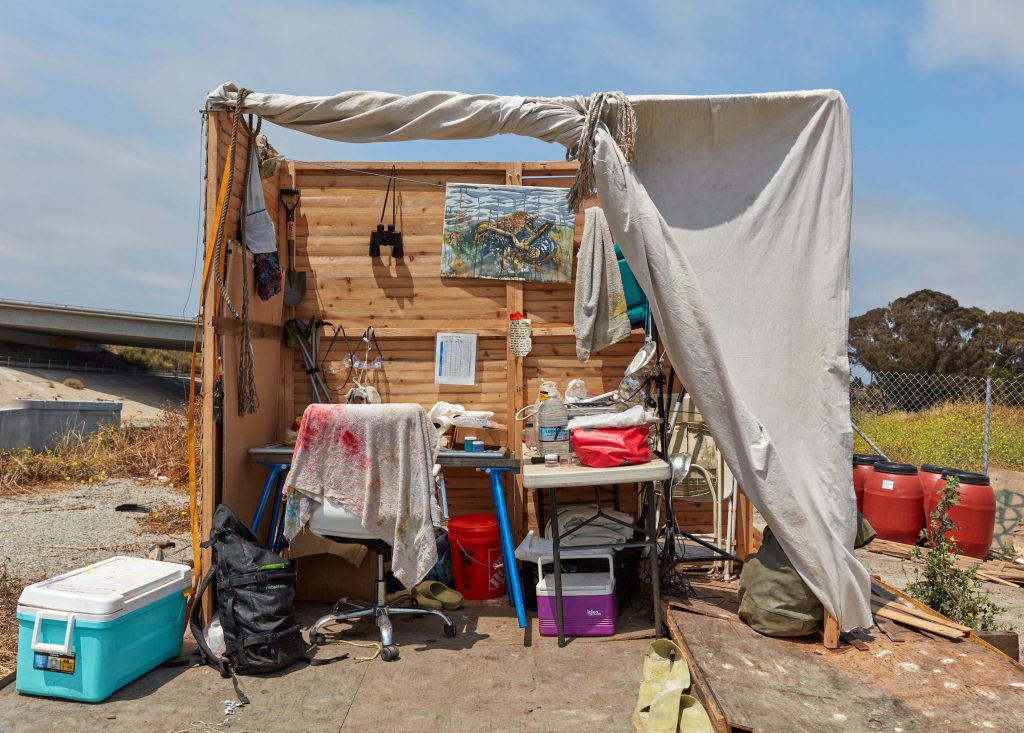
The Sterling Wells shipyard in Ballona Creek, Los Angeles. Photo by Nik Massey, courtesy of Night Gallery, Los Angeles.
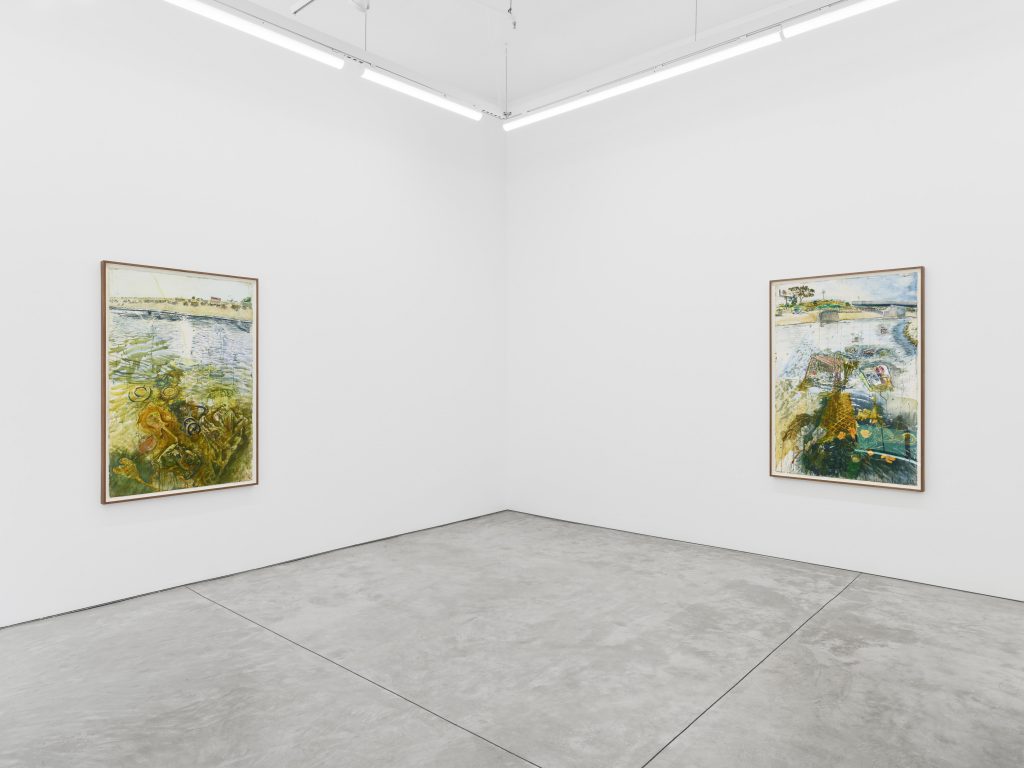
Installation view of ‘Sterling Wells: A New Flood’ at the Night Gallery, Los Angeles. Photo courtesy of Night Gallery, Los Angeles.
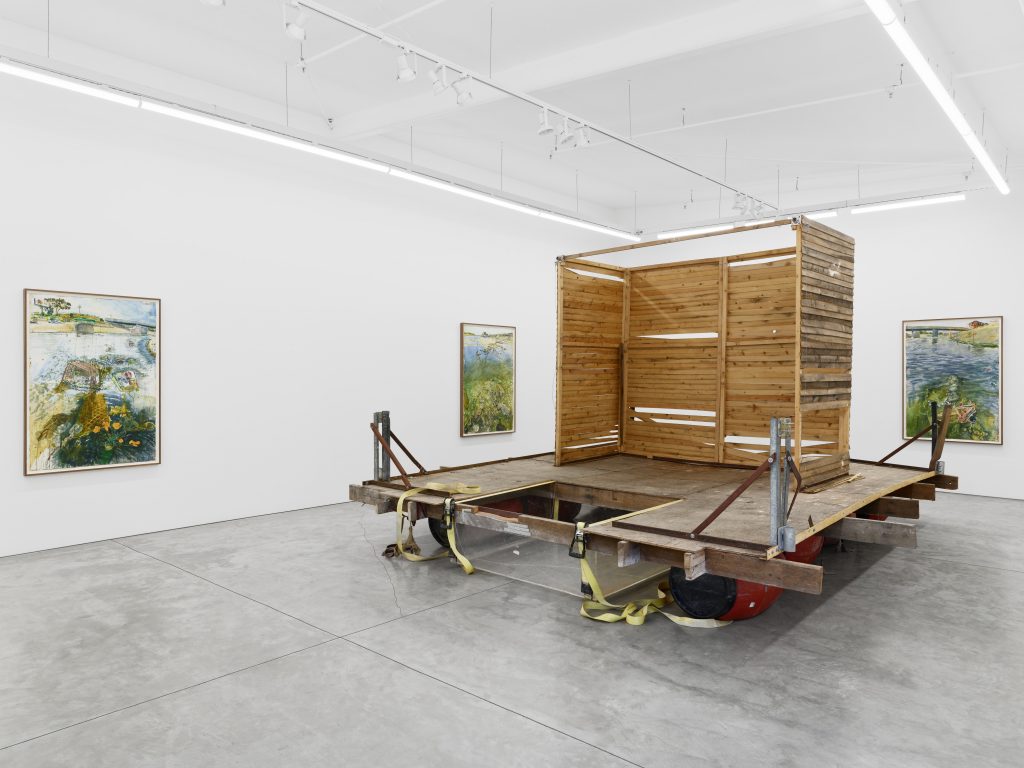
Sterling Wells’ raft on display in ‘Sterling Wells: A New Flood’ at the Night Gallery in Los Angeles. Photo courtesy of Night Gallery, Los Angeles.
“Sterling Wells: Another Flood » is on view at the Night Gallery, 2050 Imperial Street, Los Angeles, CA, through September 9.
Follow Artnet News on Facebook:
Want to stay one step ahead of the art world? Subscribe to our newsletter to receive breaking news, revealing interviews and incisive reviews that move the conversation forward.
